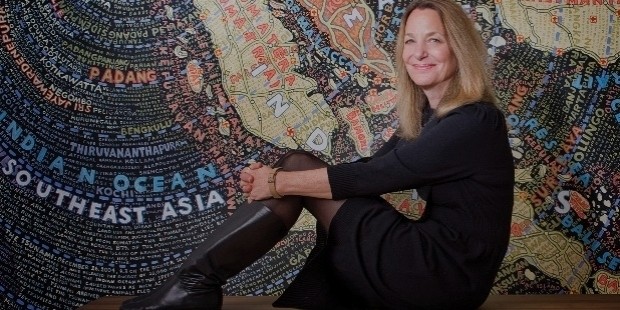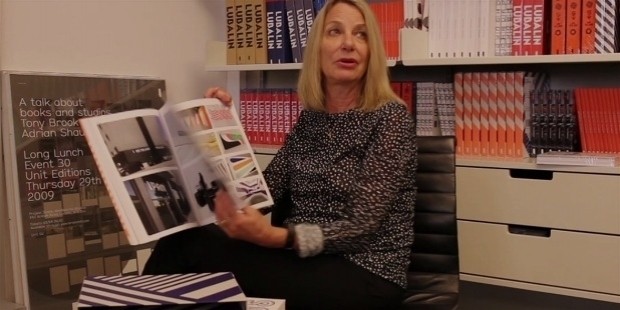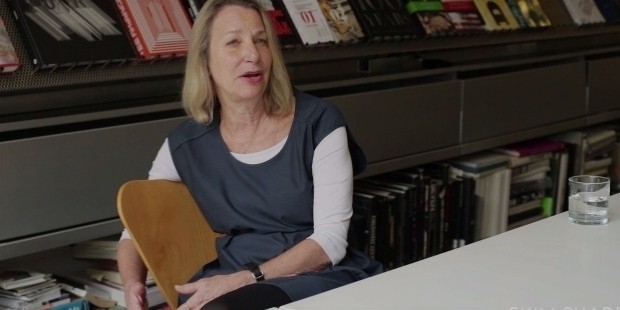The Influential Empress of Intelligent and Playful Graphic Design: Paula Scher Story

Profile
While it’s true that Rome wasn’t built in a day, apparently, one can change the game in establishing brands with a keen eye for fonts and typefaces, especially if that person is Paula Scher. For over three decades, Scher has consistently been at the forefront of innovative graphic design that she has earned the right to be dubbed as a "rock star" in her field of work. As a visual artist in her own right, as well as being a highly accomplished graphic designer, Scher is one of the influential movers and shakers who has helped shape and define the design industry at large.

Iconic, intelligent, and unabashedly populist, her striking handcrafted images have seamlessly entered into the American visual vernacular where many of today's biggest brand names owe a creative debt to Scher for her expansive influence. Indeed, Scher's distinctive yet diverse aesthetic evokes bold imagery and utilizes typography in an almost illustrative rather than printed technique, and she continues to push design boundaries to this very day where her work inspires her fellow contemporaries as well as a new generation of aspiring graphic designers.
Early Life and Education
Paula Scher was born on October 6, 1948, in Washington D.C. In the early days of her childhood, she and her family moved around quite a bit—having gone over to Arlington, Virginia, afterward and then on to Fairfax County (still in Virginia) and then on to Silver Spring, Maryland, the last being where she went to elementary and high school. On an interview with The Great Discontent, she had mentioned of having quite an unhappy childhood as she, like many people, felt like a misfit—even in her own family.

She took to drawing, using it as a means to retreat to her room to be alone and as a form of therapy, so to speak, and a source of enjoyment. “It allows me to escape, and I feel better afterwards,” she said on the interview. In high school, she took up weekend art classes at Corcoran College of Art + Design, something she kept to herself as it “wasn’t a cool thing to do” up until she became the school publicity chairman, having made posters for all school dances and events. But it wasn’t until she entered college in 1966 (at the height of the Vietnam War) at the Tyler School of Art when she truly found her creative voice and felt like she finally found a place where she belonged.
Artistic Provenance
It wasn’t quite the smooth-sailing experience for Scher in the beginning, however. She started out thinking that she was going to be a painter, but she “couldn’t really draw”; and thus began a period of experimentation, of braving different classes and mediums and modes of expression through art. This proved to be fruitful as, in her junior year, she discovered and fell in love with graphic design. She had two notable professors since then: Steve Tarantal (later on the president of the University of the Arts in Philadelphia) and Stanislaw Zagorski.

The former taught a sophomore course called Graphic Design, which she loved as it wasn’t so much about organization as it was about executing and creating off of ideas—and she had a lot of them. The latter became a very important mentor—one who taught a class that combined illustration and design (which she loved); who told her to “illustrate with type,” something that she considers to be the best advice she’d ever gotten, who convinced her to move to New York and essentially gave her the career she has now.
Career Beginnings
After graduating from college, Scher took Zagorski’s advice and moved to New York with her portfolio and $50 to her name. She was sent to meet Harris Lewine, who was then a book jacket art director for Random House and who later on introduced her to Seymour Chwast—who became another one of her important mentors and, ultimately, her husband. Scher started out as a layout artist for children’s books in Random House then later on worked full time in the promotions department for CBS Records. Working for CBS didn’t quite give her the artistic fulfilment that she would have gotten had she been able to work on album covers; so after a two-year stint there, she worked for a competing label, Atlantic Records, where promotions and covers were housed in one department.

She worked a full year at Atlantic before going back to CBS as the new East Coast art director at 25. She stayed there for the next ten years, churning out nearly 150 album covers per year—one of those being Boston’s 1976 album. Scher finally left the record industry in 1982 and started a company with former colleague and then-magazine designer, Terry Koppel. Their studio, Koppel & Scher, specialized in editorial design, promotion packaging, and covers. They were doing well for seven years until the 1990 Gulf War and then the resulting recession hit. Scher kept the business running for about a year before becoming the first principal at Pentagram, the design cooperative she’s been with for 23 years.
Career Ascendancy
Though already having hundreds of album covers attributed to her and the pretty sizable stock of knowledge and experience in graphic design in general, there was not a piece of work more notable than her rebranding of The Public. Before it became The Public, the theater went by several names (one of which was the Joseph Papp Public Theater). Simply put, it needed a solid identity; and with Scher’s clever deliberate typefacing with several weights to the word 'public', The Public Theater came to be. Since then, she’s been making promotional posters for productions by the Public—The Diva Is Dismissed; Fucking A, A Contemporary Take on The Scarlet Letter; and Bring in ‘Da Noise, Bring in ‘Da Funk to name a few.

Since the Public, people saw typography differently, and identity in design became a huge influencing factor in how graphic design for theatrical promotion and cultural institutions in general were made. But of course, things didn’t stop there for Scher. She also updated the logo for the Museum of Modern Art (MoMA), created an identity for the Metropolitan Theater, designed a new one for the New York City Ballet, designed a new logo for Windows 8 and the logo for Office 2010, and the list goes on. With her many projects involving a wide variety of big-name clients, it's safe to say that Scher is considered as the reigning queen or goddess of modern graphic design.
Awards and Achievments
Scher has had a whole slew of critical recognition from multiple award-giving bodies, of which the following listed below are just some of the awards and accolades she has received:

- 1981 – American Book Award nominations for Best Book Design and Best Compilation of Written and Graphic Material for The Honeymoon Book: A Tribute to the Last Ritual of Sexual Innocence
- 1998 – Art Directors Club Hall of Fame
- 2000 – Chrysler Award for Innovation in Design
- 2001 – AIGA Medal
- Master Series Award for the showcase of Make It Bigger by the School of Visual Arts
- 2013 – National Design Award (Cooper Hewitt Smithsonian)
- Honorary Doctorates from Corcoran School of Art, Maryland Institute of Art, and Moore College of Art
- 2011 – Print's Regional Design Annual 2011 for Shakespeare in the Park 2010 campaign, Map Murals for Queens Metropolitan Campus, and Environmental Graphic for Parking Garage at 13-17 East 54th Street

Most recently, Scher has been featured as a key subject in an episode of documentary series on Netflix entitled Abstract: The Art of Design (pictured below), where her graphic design work is profiled. The show's inaugural season also features the likes of other modern-day design luminaries across various disciplines such as maverick architect Bjarke Ingels and visionary stage designer Es Devlin.

Accolades and all other forms of recognition aside, there truly is much to be taken from Paula Scher’s story. Though it’s not something that hasn’t been said before, it still holds true today, and it’s evident in people’s lives: It doesn’t matter if you’re a little different. Use it to your advantage. Couple that with passion and the willingness to go after what you’re passionate about, everything else will follow.
- Full Name :
- Paula Scher
- Zodiac Sign :
- Libra
- Birth Place :
- Washington D.C.
- Education :
- Tyler School of Art
- Occupation :
- Artist, Business Woman , Designer , Founder
- Industry :
- Business,
Entertainment,
Media









